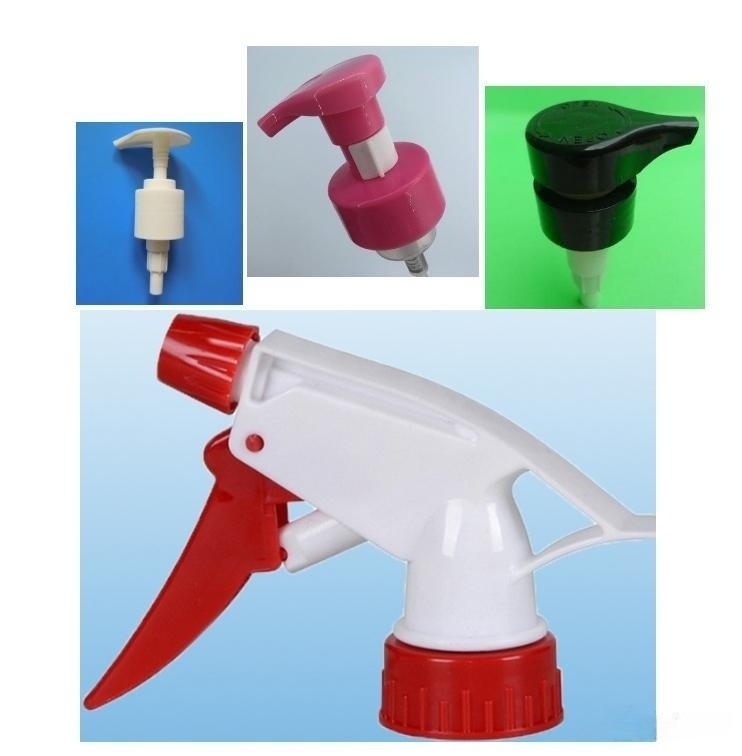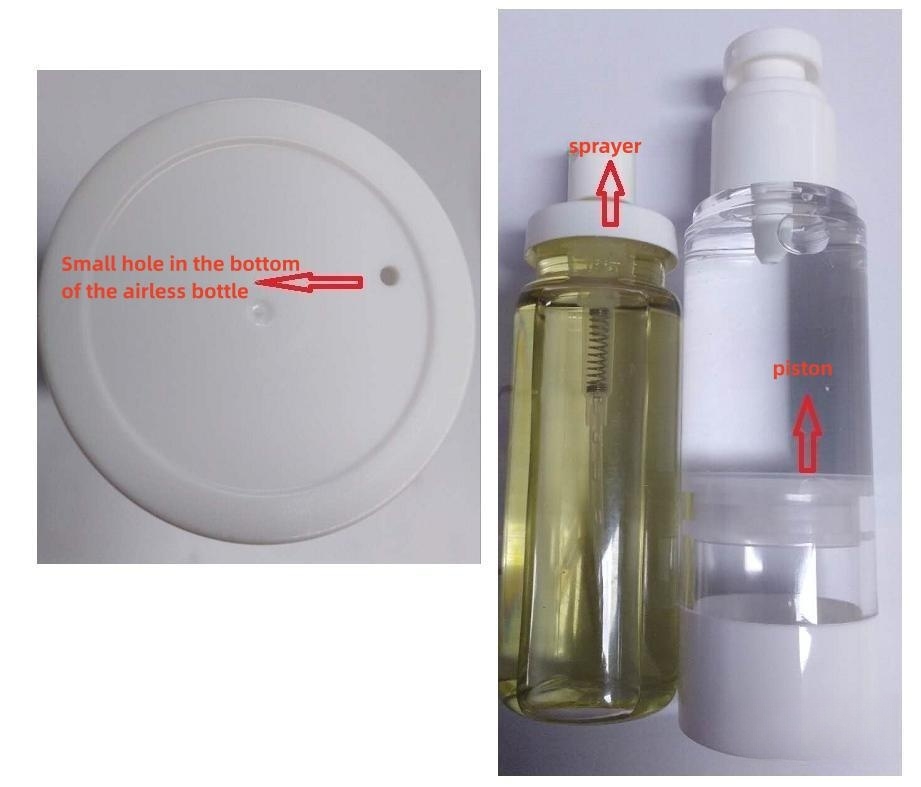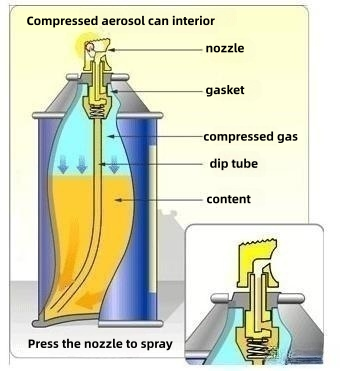

Lotion pumps are a common material used in cosmetic packaging. These pumps are designed to prevent exposure to the contents, ensuring sanitation by eliminating direct contact with the product. The discharge volume and effect can be controlled by selecting the appropriate pump based on the content's characteristics. Typically, using a pump involves pressing a button to release the product. Given the pump's advantages—sanitation, convenience, and versatility—it has become a staple in cosmetic packaging. This article outlines the testing methods for lotion pumps, focusing on functionality beyond basic appearance and size.
Types of Pumps Based on Design
Lotion pumps can be categorized into screw-type pumps, card-type pumps, left and right lock pumps, hand buckle pumps (spray guns), and direct-push pumps with outer covers that lock the pump. The hand button pump is mainly used for detergent products, such as degreasing and cleaners.
Types Based on Functionality
Pumps are also classified by function: lotion pumps, foam pumps, vacuum pumps, spray pumps (spray heads), and aerosol pumps are some examples. These pumps are designed for specific uses in cosmetic packaging, including bottles, shampoo bottles, and cleanser bottles.

Lotion Pump Principle
The lotion pump operates with a small reciprocating piston mechanism. Pressing the pump’s pressure head compresses the spring in the liquid chamber, expelling air and forcing the liquid through the discharge hole. Releasing the pressure allows the spring to rebound, creating a vacuum that pulls more liquid into the chamber. When the pump is pressed again, the liquid is dispensed through the nozzle.
Airless Pump Principle
The aireless pump has no suction tube. It utilizes a piston in the bottle and a small hole at the bottom to communicate with the atmosphere. Pressing the pump releases air from the bottle, creating a vacumn that pushes the material upward. When the content reaches the pump’s suction port, it is dispensed via the nozzle.

Foam Pump Principle
Foam pumps are designed for products like hand sanitizers, shampoos, and shower gels. These pumps force the liquid through a mesh that traps air, creating foam. They are ideal for cosmetic packaging products intended to be dispensed as foam, such as foam bottles for face cleansers or body washes.
Spray Pump Principle
Spray pumps use Bernoulli’s principle, where the fluid’s fast movement creates low pressure, allowing air to mix with the liquid and form a fine mist. This principle is essential for sprayers used in products like s, mists, and other liquid sprays.
Aerosol Pump Principle
Aerosol pumps rely on pressurized containers to push the product out through a valve when the pressure head is pressed. This causes the product to atomize into a mist, commonly used for items like shaving foam or deodorant.

Tightness of Glass (Steel) Balls
The seal around the ball in the pump is crucial for preventing leakage. Poor sealing may cause the liquid to leak back into the bottle when the pump is pressed.
Sealing Ring Tightness
A loose sealing ring can reduce the suction effect, leading to insufficient material being drawn into the pump.
Pumps are generally used for liquids like water, milk, shampoo, shower gel, and other fluids with good flowability. For thicker materials like hair conditioners, pumps can still be used, though tests should be conducted to ensure proper function. Some products, especially oils or thick lotions, may not be suitable for pumps without modifications.
Foam pumps are especially useful for creating foam from thin liquids. These pumps are best suited for liquid products, such as facial cleansers, where thicker lotions may clog the mesh.

A good seal is essential in cosmetic packaging, including pump bottles. Leaks typically occur at the threads, pump core, or nozzle. Tightening these components can address leaks and ensure optimal performance.
The number of sprays refers to how many times the pump can be pressed to release product. If the pump requires excessive pressing or fails to discharge product, it is considered defective. This is crucial for packaging serum bottles, shampoo bottles, or lotion pumps.
The pump output refers to the amount of product dispensed per press. For products like shampoo or shower gel, which are used in larger quantities, a pump with a higher output is necessary. The output should be consistent for better user experience.
When a lotion pump or any pump bottle is attached to its container, it should rotate smoothly without any gaps or slipping. A secure fit ensures better performance and aesthetic appeal, particularly in products like skin care packaging and plastic bottles.
The suction tube in pumps should not be too long or short. A tube that is too long can bend and block the pump from drawing liquid effectively, while a tube that is too short may not reach the bottom of the bottle. The length should be optimized for each packaging, including plastic packaging or vacuum bottles.
The rebound time is the duration required for the pump to return to its normal position after pressing. Ideally, the pump’s rebound time should be under 3 seconds, ensuring quick and efficient dispensing, particularly in products like airless pumps.
A drop test involves dropping the bottle from a height of 1.2m onto a flat surface to check if the pump and bottle remain intact without leakage or damage. This test is essential for ensuring durability, especially in plastic bottles and cosmetic packaging used in everyday life.
This test involves placing the filled bottle in incubators and refrigerators to simulate temperature changes. The pump should continue to function properly after exposure to both high and low temperatures, ensuring it remains effective in various environmental conditions.
The fatigue test checks whether the pump continues to function after repeated presses. This is particularly important for pumps used in products that are dispensed frequently, such as shampoo bottles and foam bottles.
Mechanical Test Items: These tests measure the force required to tighten, unscrew, or engage the pump head. They ensure that pumps, such as sprayers or lotion pumps, operate without issues.
Compatibility Test Items: Pumps are tested for long-term compatibility with their contents, ensuring the material inside the bottle doesn't degrade the pump’s function over time.
Foam Pumps: Testing for dense, delicate foam is crucial for products like hand sanitizers.
Vacuum Pumps: Testing includes checking the interaction between the piston and the bottle’s inner wall.
Spray Pumps: A key test is to ensure uniform atomization and to test spray distance and angle.
The testing of cosmetic packaging, particularly pump bottles and their components, is essential to ensure that they meet the required functionality and quality standards. Pumps such as lotion pumps, foam pumps, and airless pumps must be tested for consistency, durability, and performance to provide consumers with a reliable product. Whether it’s a serum bottle, shampoo bottle, or spray pump, quality control ensures that packaging will meet the needs of both manufacturers and users.





